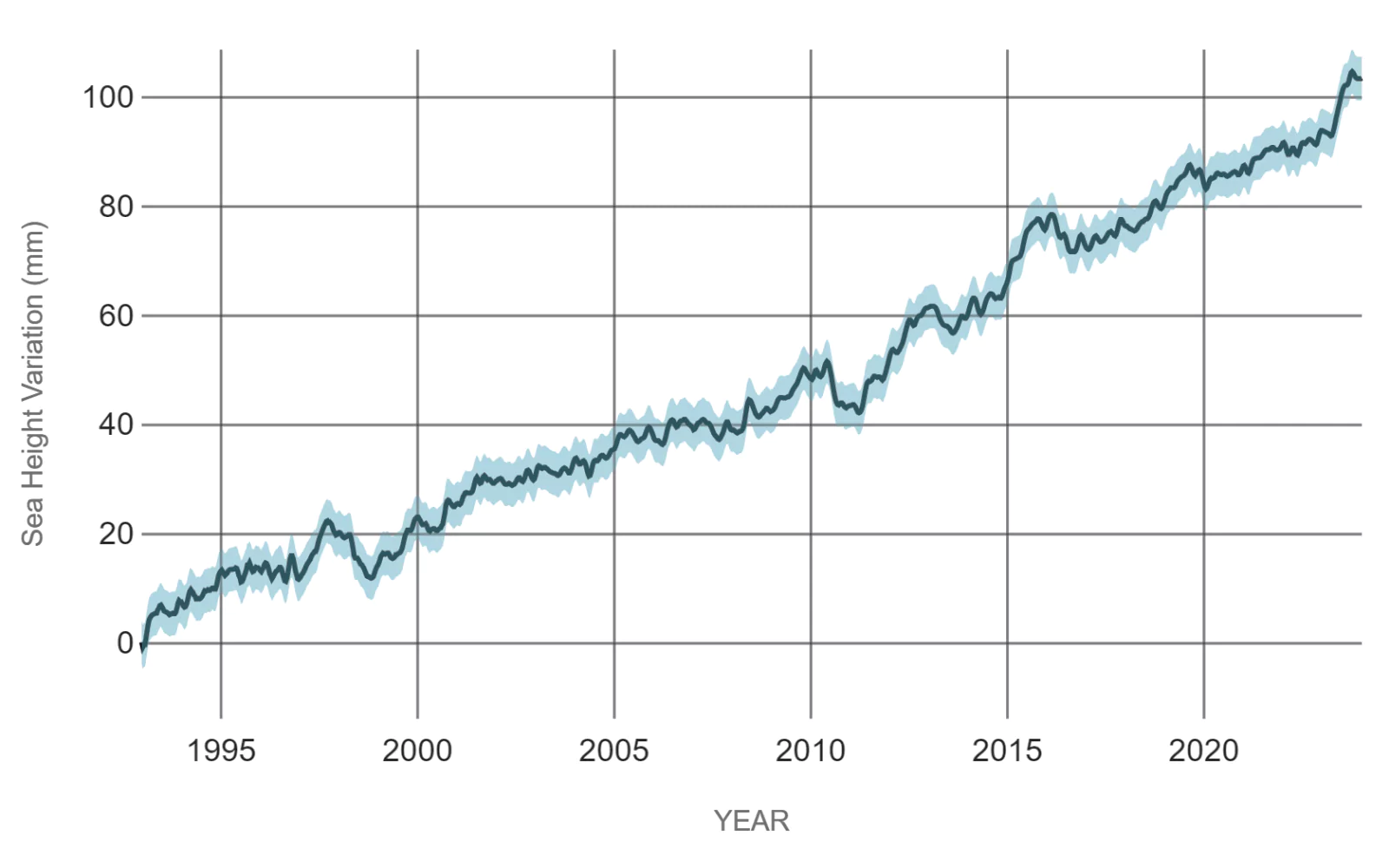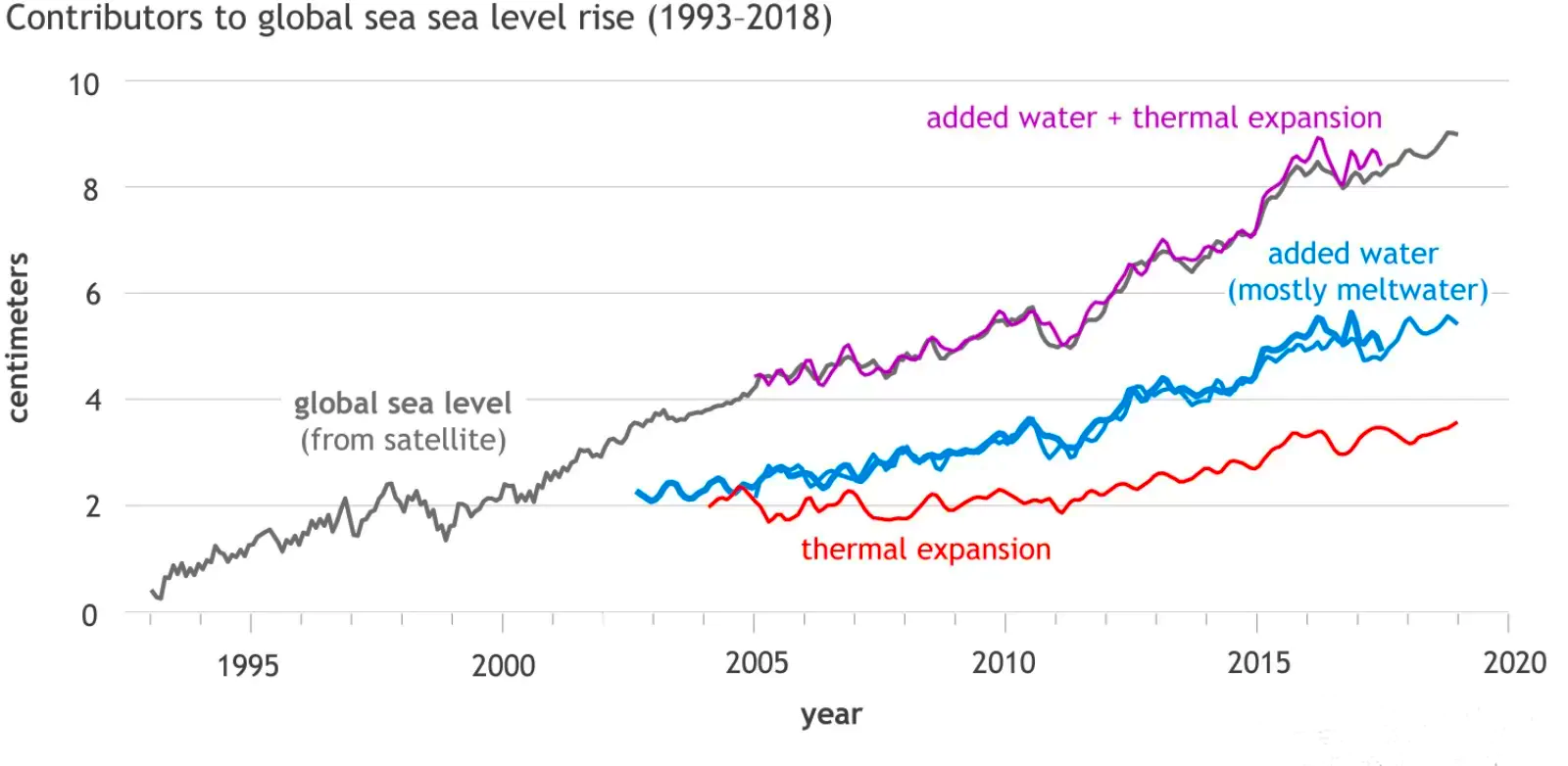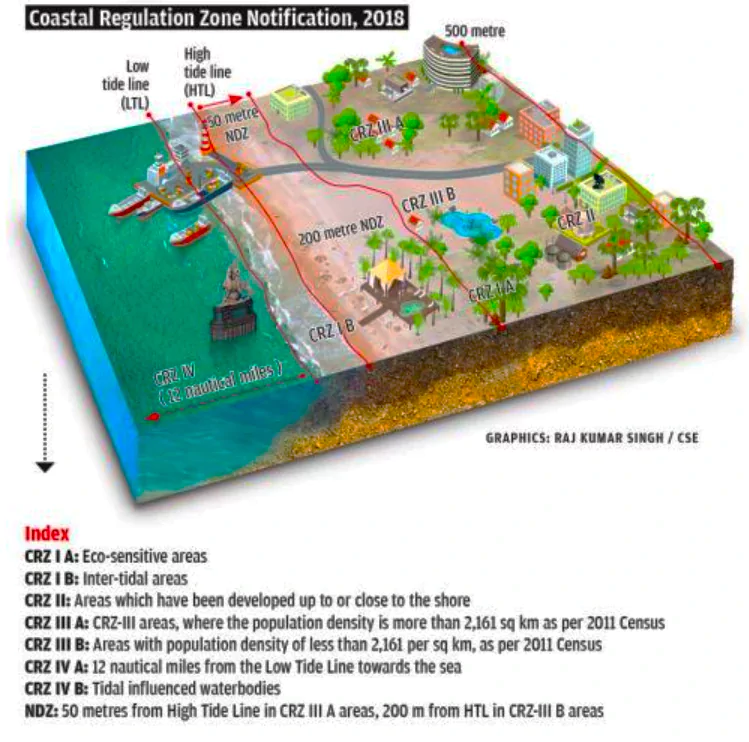Context
According to a study published in the journal Science, a quarter of the coastal land of China will sink below sea level within a century, putting hundreds of millions of people at risk of being flooded, due to land subsidence and climate change.
Sea Level Rise and Land Subsidence Amid Climate Change
- Global Impact of Sea Level Rise: According to a UN report, sea level rise is a global issue projected to affect millions of people depending on different temperature scenarios in the long run.
- Sea level rise is an increase in the level of the world’s oceans.
- Reasons Behind Land Subsidence: Subsidence in China is primarily a result of rapid urbanisation activities such as excessive groundwater extraction and the weight of buildings leading to subsidence.
- The situation has been exacerbated by climate change, which is resulting in the rise of sea levels.
Enroll now for UPSC Online Course

Status of Global Sea Level Rise (SLR)
- According to a report by the National Oceanic and Atmospheric Administration (NOAA), the global sea level has risen by about 8–9 inches or 21–24 centimetres since 1880 and the rate of increase has been accelerating since 1993.
- It has more than doubled from 0.07 inches or 0.18 centimetres per year in 1993 to the current rate of 0.17 inches or 0.42 centimetres per year.
- The global average sea level rose by about 0.3 inches or 0.76 centimetres from 2022 to 2023.
- Projections for 2050: At current rates of acceleration, projections indicate that there will be an additional 20 centimeters of global mean sea level rise by 2050.
- This would mark a doubling of the rate of change within the next three decades amplifying the frequency and severity of floods worldwide.
- Status in India: According to the Ministry of earth sciences, the sea level along India is rising at an average rate of about 1.7 mm per year with 3.3 mm per year in the recent decades (1993-2015).

Impact of Climate Change on Sea Level Rise
- Global Warming as Key Driver: Global warming stands as the primary catalyst for the rising of sea levels.
- As temperatures rise worldwide, many glaciers and ice sheets are thawing, increasing oceanic water levels.
- Global warming is elevating ocean temperatures, inducing thermal expansion, wherein warmer water expands in volume, thereby exacerbating the rise in sea levels.
- Increased Melting of Mountain Glaciers and Ice sheets: According to the NOAA report, from the 1970s until recent years, both melting and thermal expansion have been equally responsible for the observed increase in sea levels.
- However, there has been a notable acceleration in the melting of mountain glaciers and ice sheets.
- For example, a study in 2023 revealed that the rate of glacier melting in Greenland had surged to five times its pace over the past two decades.
- According to the NOAA report, the amount of SLR due to melting between 2005 and 2012 nearly doubled in comparison to the amount of SLR due to thermal expansion.
Impact of Sea Level Rise
- Flooding of coastal areas: As per a 2022 analysis by RMSI, a global risk management firm, some critical properties and road networks in Mumbai, Kochi, Mangalore, Chennai, Visakhapatnam, and Thiruvananthapuram will be submerged by 2050.
- The island countries are more risk-prone like Indonesia. In 2019, Indonesia announced that the country’s capital would be relocated from Jakarta, which is prone to flooding, to the province of East Kalimantan on the island of Borneo.
- Storm surges: The rise of sea level leads to more intense storm surges i.e., the rise in seawater level caused solely by a storm — flooding, and damage to coastal areas.
- This is because higher sea level can allow more water inland during hurricane-related storm surges.
- Impact on Freshwater Aquifers: With SLR, saltwater contaminates freshwater aquifers, many of which are used by communities for agricultural and drinking purposes.
Coastal Adaptation Strategies to Tackle Sea Level Rise
- Protection Strategy:
- Hard protection: It proposes hard structures to block the inflow of sea water, and protects facilities and critical infrastructure that would be difficult to move or relocate.
- Ex- Dikes or levees is the most common coastal defense strategy.
- Soft protection: It involves the use of natural sedimentation and vegetation to form a buffer zone.
- It is relatively low-cost and eco-friendly, and can be provided by natural processes that can be accelerated through minimal human effort, such as wetland restoration or planning waterfront parks.
- New coastal wetlands act like sponges, reducing water flow during flood events.
- Accommodation Strategy: It reduces the impact of SLR through changes in human behavior or infrastructure while maintaining existing uses of coastal areas.
- For example, it might involve modifying existing infrastructure for adaptive land uses, raising the ground level or improving drainage facilities, encouraging saltresistant crops, restoring sand beaches, and improving flood warning systems.
- Retreat Strategy: It mitigates the risk of SLR by relocating developments further from the coastline.
- It discourages development in high-risk coastal areas and encourages development at low-risk inland areas that are usually at higher elevation.
India’s Efforts to Tackle Sea Level Rise
- National Action Plan on Climate Change: It was launched in 2008 and includes 8 national missions to address the challenges of climate change.
- Coastal Regulation Zone: It involves managing coastal areas to balance environmental, economic, human health, and human activities. CRZ along the country has been placed in four categories, which are as follows:
- CRZ I – Ecologically Sensitive Areas.
- Location: They lie between the low and high tide lines. In this area, exploration of natural gas and salt extraction are permitted.
- CRZ II – Shore Line Areas
- Location: The areas that have been developed up to or close to the shoreline. Unauthorized structures are not allowed to be constructed in this zone.
Enroll now for UPSC Online Classes
- CRZ III – Undisturbed Area
 Location: Rural and Urban localities that fall outside I and II.
Location: Rural and Urban localities that fall outside I and II.- Only certain activities related to agriculture even some public facilities are allowed in this zone.
- For CRZ-III (Rural) areas, two separate categories have now been created for improved management:
- CRZ-III A: Rural Areas that are densely populated with a population density of 2161/km2. They will have an NDZ of 50 meters from HTL. Earlier it was 200m from HTL according to the CRZ Notification of 2011.
- CRZ-III B: Rural Areas that are densely populated with a population density of 2161/km2. They will have an NDZ of 200m from HTL.
- CRZ IV – Territorial Area
Location: An area covered between the Low Tide Line and 12 Nautical Miles seaward. Fishing and allied activities are permitted in this zone. No solid waste should be discharged in this zone.
Also Read: The Fourth Global Coral Bleaching Event Is Underway
To get PDF version, Please click on "Print PDF" button.


 Location: Rural and Urban localities that fall outside I and II.
Location: Rural and Urban localities that fall outside I and II.